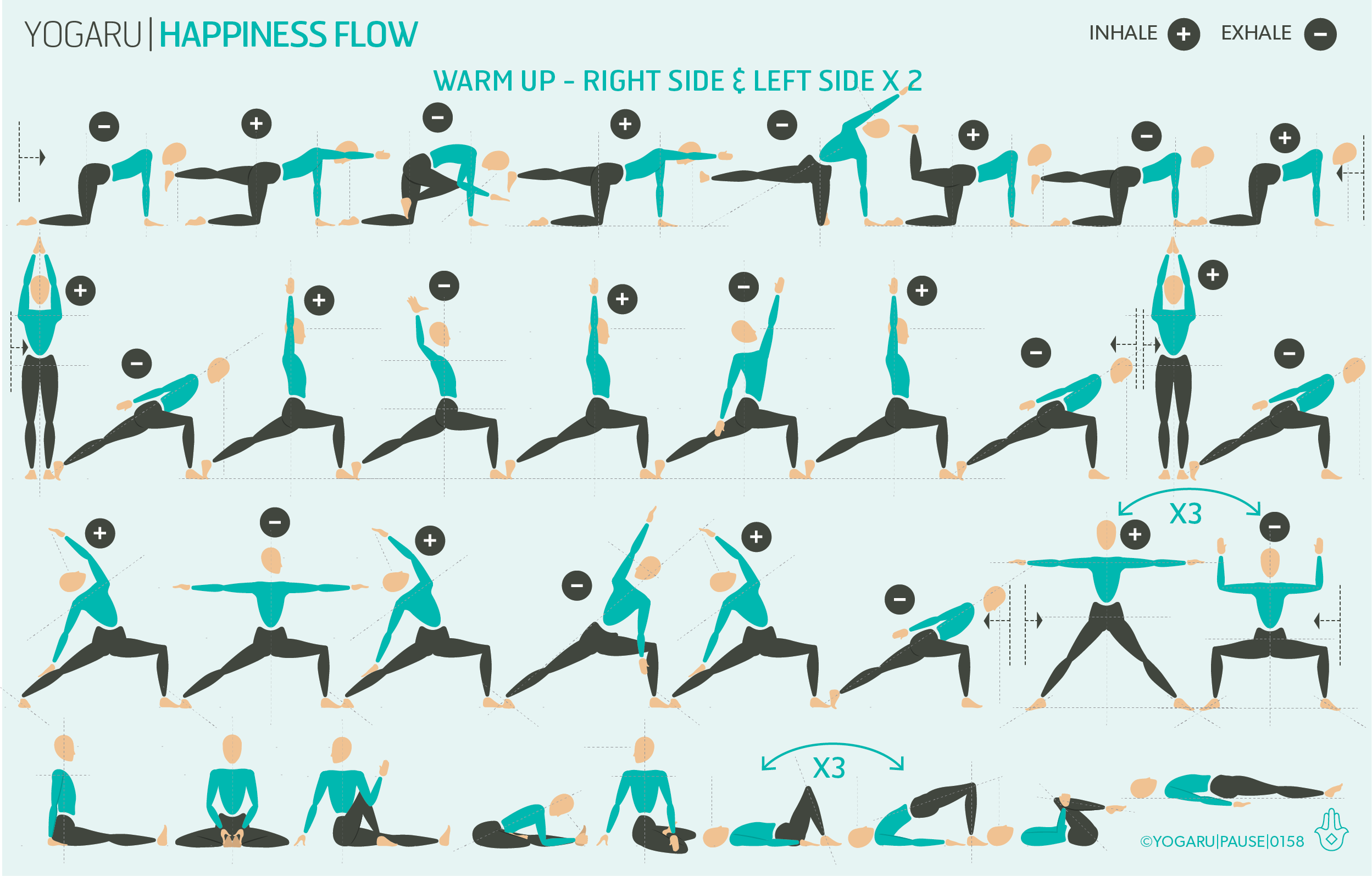THE HAPPINESS BUZZ
We have all experienced that post yoga pep to your step – where you step on your mat in a bit of a funk and finish wondering what it was that had you out of sorts in the first place. Sometimes when I find my head is not in the right place before I practice, I remind myself to trust in the process of yoga and, even though I might have a very valid reason to be stressed, know that I will feel much better after I practise. As we practise, our worries about the past and the future ease and our minds feel a little less cluttered. Yoga is not a cure all but it certainly helps smooth out the bumps along the way.
One of the steps to living a good life is living with a yoga principle called Santosa – or to be content with life. Happiness comes from our attitude to life, not from our life circumstances. The first step to being happy is to be content with what you have in life, no matter how good or bad it is. When we go through rough patches our attitude to this difficult situation has the power to make the situation easier to navigate or much more difficult.
THE SCIENCE BEHIND IT
Yoga is more than just a movement practice, it connects the body and brain through the nervous system. The breath is the main gateway to the power of the practice of yoga. When we consciously breathe the diaphragm stimulates one of the cranial nerves which is responsible for 75% or our ‘rest and restore’ nervous system response – the vagus nerve. When it is stimulated it sends chemical signals that reduce heart rate, blood pressure, and inhibits the stress hormones adrenaline and cortisol. Practising yoga improves vagal tone which is the body's ability to regulate through the vagus nerve. A study was done comparing the effects of yoga and cardiovascular exercise on the level of the neurotransmitter GABA, the hormone responsible for reducing anxiety. The study found that while GABA increases in both groups, there was a higher increase in the yoga group and greater improvement in mood and decreased anxiety. Yoga also increases levels of dopamine (the feel good hormone), serotonin ( the happy hormone) and endorphins (the runner's high hormone).
EXPLORING HAPPINESS FLOW IN YOUR PRACTICE
This sequence is part of a series of sequences where I look at how yoga can help regulate our moods. Each of these sequences start with the same warm up that will move all the main joints of the body – the spine, shoulders and hips. This repetition gives you ‘comfort in familiarity’ as you can practice this series, while at the same time ensuring you are warmed up and ready for the themed mini flows that follow.
The sequence has plenty of heart opening poses that are known for their uplifting quality. It also has plenty of hip opening poses to help you move with ease after you practice. As you flow through the sequence use the breath ‘inhale’ and ‘exhale’ cues to help you move fluidly and freely. You will also repeat the mini flows three times until you are moving fluidly without having to think too much. Let your body go into autopilot while you focus all your attention on your inhale and exhale. You will notice the three main standing flows have the same framework and the centre part changes. Similar to the warm up principle this will help you flow more easily and own your practice. You will finish with some simple seated poses and a backbend to round up your happiness flow.
ALIGNMENT CUES
There is no specific peak pose in this happiness flow sequence. Use the cues below to help you flow through the sequence with ease and fluidity.
Have a read of the tips below and either print out the sequence or save it onto your device:
Use the breath guide in the sequence to help you link breath with movement in the flow. Inhale is indicated with a ‘+’, exhale is a ‘-”.
In the warm up focus your attention on the area you are warming up as indicated by the sequence.
If there are specific poses that you would like to stay longer in, give yourself three deep breaths in those poses and pick up the next pose with the allocated inhale or exhale as indicated by the sequence.
For a longer practice, linger in each of the poses of the three mini flows for the first round and then move with the breath for the second and third round.
To save the images for personal use click and hold down the image until the ‘save image’ option appears; on Mac hold down ‘control’ and click the image to get the option box; on PC right click on the image to get the option box. Scroll down in the ‘option box’ and click ‘save image’.
Ruth Delahunty Yogaru

